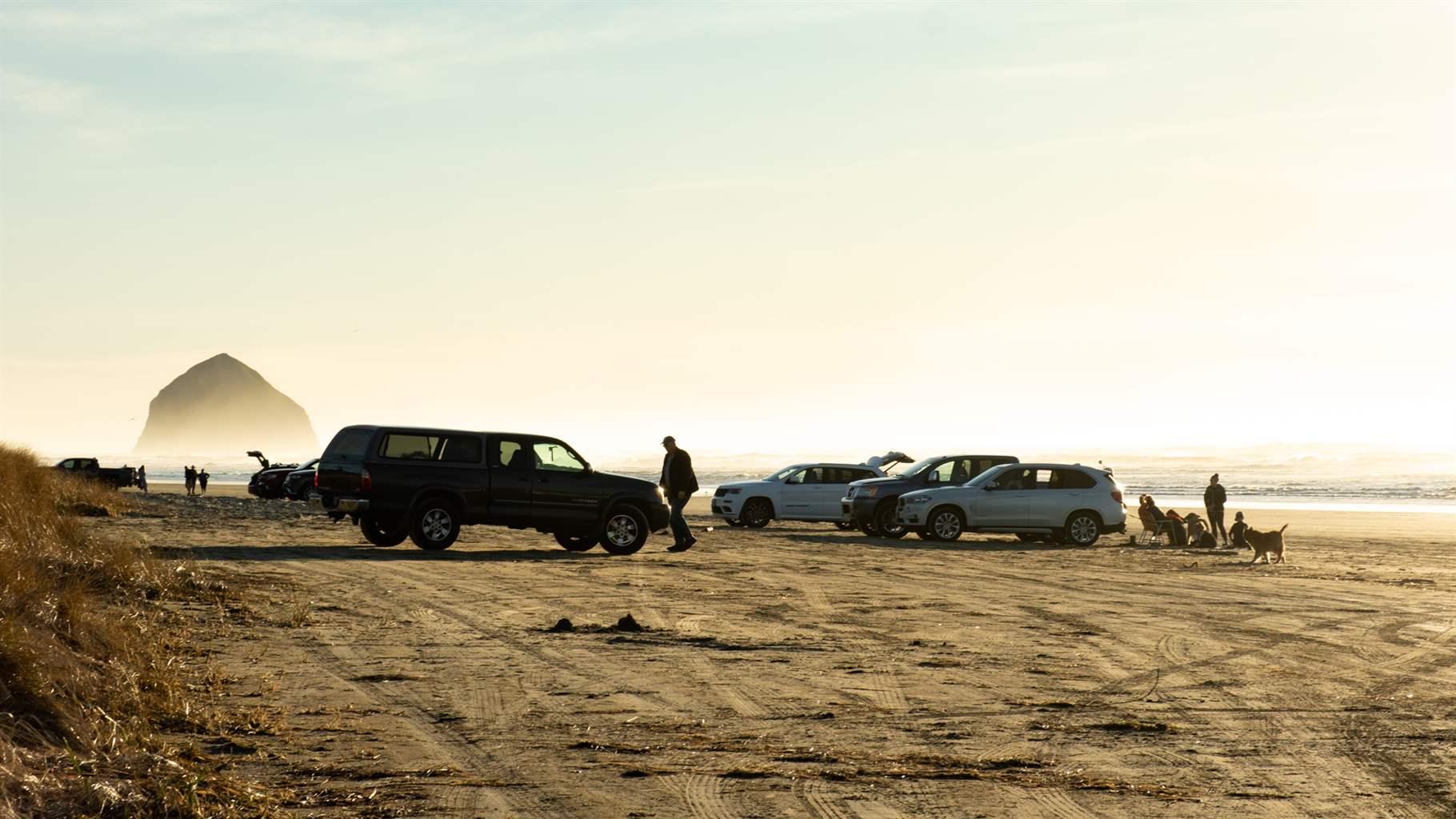LAST UPDATEDJuly 20, 2021
 Beachgoers await the sunset on one of the remaining drivable beaches north of Pacific City, Oregon. Spurred by crowding and environmental concerns, coastal communities nationwide are changing the rules for accessing beaches by car. The Pew Charitable Trusts
Beachgoers await the sunset on one of the remaining drivable beaches north of Pacific City, Oregon. Spurred by crowding and environmental concerns, coastal communities nationwide are changing the rules for accessing beaches by car. The Pew Charitable Trusts
Editor’s note: This story has been updated to correct the spelling of Derek Brockbank's name.
PACIFIC CITY, Ore. — To access the beach, Nicole Boulden eased her all-wheel drive Dodge Durango from the highway down a steep, rock-strewn access road toward the ocean. Behind her, Boulden's friend Kari Layman, 47, drove a Dodge Caravan very carefully down the same path.
"We take it kind of slow," Layman said.
They parked in a wind-sheltered cove on the Oregon coast where their children could play and their teenagers could sneak away. Then, they unfolded beach chairs and a sun shelter, and leashed their dogs to the Durango. Only a handful of other vehicles were in view.
To the south, they could see one of the iconic haystack rock formations of the Oregon coast. All around was the roar of the Pacific Ocean. It was a bright, sunny Friday afternoon in early June, and the weekend beckoned. Layman, a native Kansan who embraced the beach when she moved to Oregon five years ago, was at peace.
"If I'm feeling really stressed, I think: 'I need to go to the coast,'" Layman said. "The sound of the waves, it's relaxing and also refreshing. I always feel better after a day at the beach."
But accessing this sort of scene by car is increasingly difficult in states with beaches, a trend sped up by the pandemic. In California, the state's Coastal Commission recently announced plans to phase out vehicular access at its remaining drive-on beach state park, Oceano Dunes State Vehicular Recreation Area, along the central coast near San Luis Obispo.
On Florida’s Atlantic coast, officials in Amelia Island decided in 2020 during the pandemic to restrict vehicular access to daytime driving and residents only—and then kept it that way. And just south of where Layman and Boulden parked for the day recently, the Oregon State Parks and Recreation Commission decided to close a popular beach to driving, in part because of overcrowding.
States must balance the demands of short-term tourism that supports local economies with the desires of permanent residents, many of whom don't want cars or partygoers to interfere with their view or their enjoyment of a quiet walk along the ocean. There are also the competing needs of working fishers and shellfish harvesters, as well as the environmental stress of cars on nesting turtles, birds and other marine life.
And driving itself can damage dunes and other natural formations that protect coastal communities from storms. Many states, particularly those on the East Coast with fragile sea turtle populations, have faced legal challenges from conservation groups over the environmental damage caused in part by beach driving.
full article here